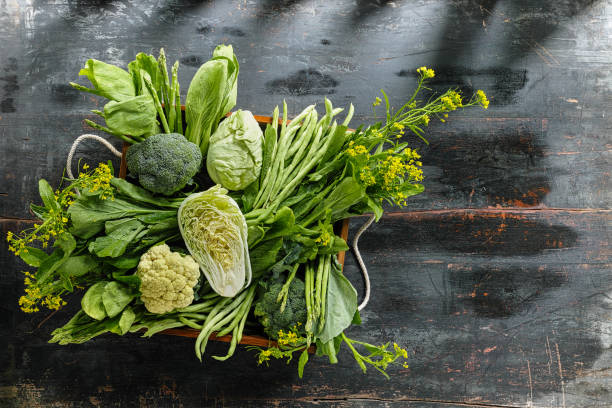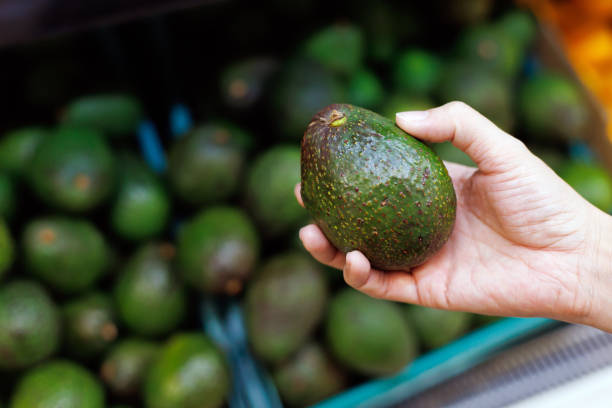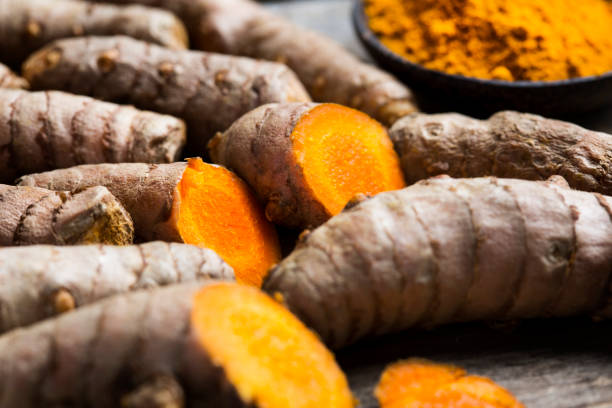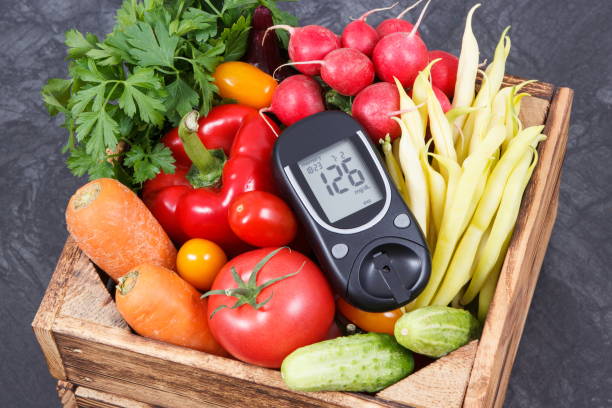Maintaining healthy blood sugar levels is crucial for your overall well-being. Whether you’re managing diabetes or simply striving to improve your health, choosing the right foods can help you effectively control your blood sugar levels. A balanced diet with the right food choices can also provide steady energy throughout the day, keeping you focused and active. In this post, we will explore the best foods that are known to lower blood sugar, support your overall health, and give you the energy you need to stay sharp and energized all day long.
Why Blood Sugar Control Matters
Controlling your blood sugar is essential for maintaining overall health and well-being. When blood sugar levels stay too high over time, it can lead to serious complications like heart disease, kidney damage, and nerve problems. On the other hand, low blood sugar (hypoglycemia) can also pose risks, leading to symptoms like confusion, dizziness, and even fainting. Keeping your blood sugar levels in check through healthy eating, regular physical activity, and proper self-care can help prevent these issues. Achieving a balanced blood sugar level supports smooth body function and promotes long-term health, allowing you to feel your best every day.
The Role of Diet in Blood Sugar Management
What you eat has a big impact on how your body manages blood sugar. Foods rich in fiber, protein, and healthy fats can slow down the absorption of sugar into your bloodstream, helping to prevent dangerous blood sugar spikes. In contrast, processed foods and sugary snacks can cause a quick rise in blood sugar, which is why it’s important to focus on whole, nutrient-packed foods. By making smart food choices, you can support stable blood sugar levels and overall health.
In the following sections, we’ll share some of the best foods you can add to your diet to help lower blood sugar levels and promote better health.

Leafy Greens: Nutrient Powerhouses for Blood Sugar Control
Leafy greens like spinach, kale, and Swiss chard are fantastic options for managing blood sugar levels. These vegetables are low in calories, high in fiber, and loaded with essential nutrients and antioxidants. They also have a low glycemic index (GI), which means they cause only a minimal rise in blood sugar after eating, helping you maintain stable levels.
Key Benefits:
- Rich in magnesium, a mineral that helps regulate blood sugar.
- High in fiber, which slows the absorption of sugar into the bloodstream.
- Packed with antioxidants that support overall health and fight inflammation.
How to Include Them: You can easily add leafy greens to your diet by tossing them into smoothies, salads, or stir-fries. They are a simple and tasty way to enjoy a blood sugar-friendly meal while boosting your health.
Nuts and Seeds: A Healthy Snack Option
Nuts and seeds, including almonds, walnuts, chia seeds, and flaxseeds, are great sources of healthy fats and protein. These foods can help keep blood sugar levels steady by preventing sudden spikes and crashes, making them an ideal choice for those looking to manage their blood sugar throughout the day.
Key Benefits:
- High in fiber, which helps maintain consistent blood sugar levels.
- Packed with healthy fats, which enhance insulin sensitivity and support metabolic health.
- Provide a slow, sustained release of energy, reducing the risk of blood sugar spikes.
How to Include Them: Enjoy a handful of mixed nuts as a satisfying snack, or sprinkle chia seeds and flaxseeds onto your yogurt, smoothies, or salads for an extra boost of nutrients and blood sugar stability.
Berries: Delicious and Blood Sugar-Friendly
Berries such as strawberries, blueberries, raspberries, and blackberries are not only delicious but also great for managing blood sugar. They are low in sugar, high in fiber, and have a low glycemic index, making them perfect for keeping blood sugar levels stable. Packed with antioxidants, berries help fight inflammation and protect your cells from damage.
Key Benefits:
- Rich in anthocyanins, antioxidants that help lower blood sugar levels.
- High in fiber, which slows down the absorption of sugar into the bloodstream.
- Low in sugar, making them an ideal fruit for controlling blood sugar.
How to Include Them: Add fresh or frozen berries to your morning yogurt, blend them into smoothies, or enjoy them on their own as a nutritious and blood sugar-friendly snack.
Whole Grains: Complex Carbs for Steady Energy
Whole grains such as oats, quinoa, barley, and brown rice are excellent sources of complex carbohydrates. Unlike refined carbs, which lead to rapid spikes in blood sugar, whole grains are digested more slowly, offering steady energy throughout the day and helping to prevent blood sugar spikes.
Key Benefits:
- High in fiber, which helps regulate blood sugar levels and supports digestion.
- Rich in magnesium, a mineral that plays a role in managing blood sugar.
- Slowly digested, which helps maintain stable blood sugar levels and reduces the risk of sudden spikes.
How to Include Them: Replace refined grains with whole grains in your meals. Start your day with whole grain oats for breakfast, use quinoa as a side dish, or incorporate brown rice into stir-fries for a delicious and blood sugar-friendly meal.
Beans and Legumes: Plant-Based Protein for Blood Sugar Control
Beans, lentils, and other legumes are great sources of plant-based protein and fiber, both of which play a key role in regulating blood sugar levels. The high fiber content in these foods slows the digestion and absorption of sugar, helping to prevent rapid blood sugar spikes. With their low glycemic index, beans and legumes are an excellent choice for keeping blood sugar levels steady throughout the day.
Key Benefits:
- High in fiber, which promotes stable blood sugar levels and supports digestive health.
- Rich in protein, which helps control hunger, keeping you fuller for longer and preventing overeating.
- Low glycemic index, which ensures they won’t cause sudden blood sugar spikes.
How to Include Them: Incorporate beans into soups, stews, and salads, or enjoy hummus with whole-grain crackers for a healthy, blood sugar-friendly snack. These versatile foods are easy to add to many meals for a satisfying and nutritious boost.

Avocados: Healthy Fats for Balanced Blood Sugar
Avocados are a fantastic source of heart-healthy fats and fiber, making them a great option for stabilizing blood sugar levels. The healthy fats in avocados help slow digestion, preventing rapid blood sugar spikes, while their fiber content provides steady energy throughout the day. With their nutrient-rich profile, avocados are a smart choice for supporting overall health and balanced blood sugar.
Key Benefits:
- Rich in monounsaturated fats, which help improve insulin sensitivity and support healthy blood sugar regulation.
- High in fiber, which slows down the absorption of sugar, keeping blood sugar levels steady.
- Packed with essential vitamins and minerals, including potassium and vitamin E, that promote overall health.
How to Include Them: Enjoy avocado on whole-grain toast, add slices to your salads, or make a creamy guacamole to pair with whole-grain chips. These delicious options are simple ways to add more healthy fats to your diet while keeping your blood sugar levels in check.
Cinnamon: A Spice for Better Blood Sugar Control
Cinnamon is more than just a flavorful spice; it’s also a natural aid for regulating blood sugar levels. Research shows that cinnamon can help improve insulin sensitivity and lower fasting blood sugar levels, making it an excellent addition to your diet for better blood sugar management. When paired with other healthy foods, cinnamon can enhance your efforts to maintain balanced blood sugar levels.
Key Benefits:
- Improves insulin sensitivity, which helps regulate blood sugar levels more effectively.
- Contains powerful antioxidants that support overall health and help reduce inflammation.
- May help lower fasting blood sugar levels, contributing to better long-term blood sugar control.
How to Include It: Sprinkle cinnamon on your morning oatmeal, blend it into smoothies, or use it in baking for a sweet and blood sugar-friendly touch. Incorporating this spice into your daily routine is an easy way to support your blood sugar management.
Apple Cider Vinegar: A Natural Blood Sugar Regulator
Apple cider vinegar (ACV) is more than just a popular kitchen ingredient—it’s also known for its ability to help regulate blood sugar levels. Studies suggest that ACV can improve insulin sensitivity and lower blood sugar levels after meals, making it an effective tool for managing blood sugar. When added to a balanced diet, apple cider vinegar can support healthy blood sugar levels and overall wellness.
Key Benefits:
- Helps improve insulin sensitivity, making it easier for your body to regulate blood sugar.
- Lowers blood sugar levels after meals, helping to prevent spikes.
- May aid in weight loss, which can further support blood sugar control and reduce the risk of complications.
How to Include It: To incorporate apple cider vinegar into your routine, dilute one to two tablespoons in a glass of water and drink it before meals. You can also use it as a tangy addition to salads or salad dressings for a flavorful, blood sugar-friendly boost.
Garlic: A Flavorful Blood Sugar Booster
Garlic is not only a flavorful addition to meals but also a powerful food for regulating blood sugar levels. Studies have shown that garlic can improve insulin sensitivity, making it easier for the body to manage blood sugar. It’s rich in sulfur compounds, which provide anti-inflammatory and antioxidant benefits, supporting overall health and helping to maintain stable blood sugar.
Key Benefits:
- Improves insulin sensitivity, helping the body regulate blood sugar more effectively.
- Contains anti-inflammatory properties that promote overall health and reduce inflammation.
- Helps regulate blood sugar levels, making it an excellent choice for blood sugar control.
How to Include It: Add garlic to soups, stews, and stir-fries, or use it in salad dressings for a burst of flavor and a blood sugar-boosting benefit. Its versatility makes it easy to incorporate into many meals for enhanced taste and health benefits.

Turmeric: A Powerful Anti-Inflammatory Spice
Turmeric is a spice that contains curcumin, a compound widely known for its powerful anti-inflammatory properties. Research suggests that curcumin can help regulate blood sugar levels and improve insulin sensitivity, making it a great addition to a diet aimed at managing blood sugar. By incorporating turmeric into your meals, you can support healthy blood sugar control while benefiting from its overall health-boosting qualities.
Key Benefits:
- Improves insulin sensitivity, allowing for better blood sugar regulation.
- Reduces inflammation, which is important for maintaining balanced blood sugar.
- May help lower blood sugar levels over time, contributing to long-term blood sugar control.
How to Include It: Add turmeric to curries, blend it into smoothies, or enjoy a warming turmeric latte (golden milk) for a flavorful way to support your blood sugar management. This versatile spice can easily be included in a variety of dishes for added health benefits.
Conclusion: Make Blood Sugar-Lowering Foods Part of Your Diet
Adding blood sugar-lowering foods to your diet can be a powerful step toward managing your blood sugar levels and boosting your overall health. By focusing on whole, nutrient-dense foods such as leafy greens, nuts, berries, and whole grains, you can help maintain stable blood sugar and avoid dangerous spikes. Don’t forget to include other beneficial options like avocado, cinnamon, garlic, and turmeric to further support your health.
It’s important to remember that a balanced diet is just one aspect of blood sugar management. Regular physical activity, staying hydrated, and managing stress are all crucial factors in keeping your blood sugar levels in check.
Start incorporating these blood sugar-friendly foods into your meals today and notice the positive changes in your energy, mood, and overall health!

